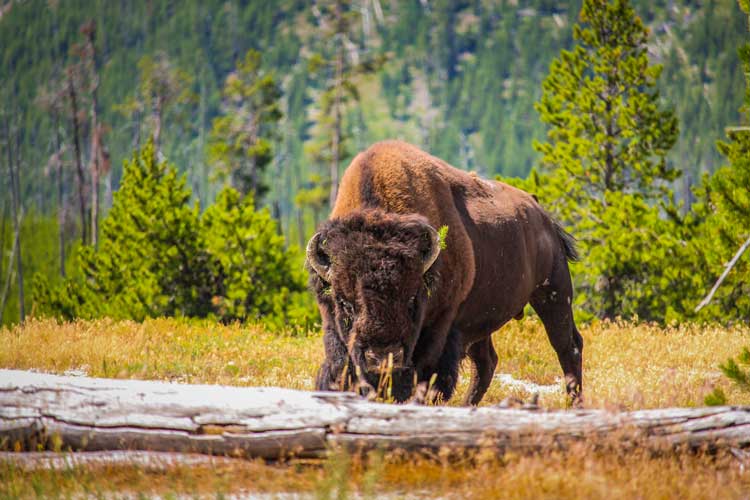Child injured by bison at Yellowstone National Park
On the afternoon of July 22, a group of approximately 50 people were within 5-10 feet of a bison near Observation Point Trail in the Old Faithful Geyser area of Yellowstone National Park. The people remained extremely close to the bison for at least 20 minutes before the animal decided to charge the group.
The charging bull bison came into contact with a 9-year-old girl from Odessa, Florida, and tossed her into the air. Her family took the girl to the Old Faithful Lodge where park emergency medical providers treated her. She was later taken to the Old Faithful Clinic and released. No citations were issued.
The public is asked to stay at least 25 yards (75 feet) away from all large animals, including bison, elk, bighorn sheep, deer, moose and coyotes and at least 100 yards (300 feet) away from bears and wolves.
Butterflies are declining at a rate of 2 percent per year
Drastic drops in seasonal butterfly rates make headlines, but systematic monitoring of 81 species of butterflies over 21 years shows that the total abundance of butterflies is declining 2 percent per year, resulting in a cumulative 33 percent reduction in butterfly abundance over the last two decades.
The study, which monitored butterflies in Ohio, shows that three times as many butterfly species have negative population trends compared to positive trends. This data mirrors similar findings in three comparable long-term European butterfly monitoring efforts. The analysis concludes that environmental changes, such as climate change, habitat degradation, and agricultural practices, may be contributing to the decline in butterflies.
Traction is gaining for reduced oversight and inspections at US nuclear plants
The nuclear industry has pushed through, or is in the process of pushing through, money-saving rollbacks under the Trump administration. According to the Associated Press, some of these rollbacks include “fewer mock commando raids to test nuclear power plants’ defenses against terrorist attacks; fewer smaller government inspections for plant safety issues and less noticeable to the public and to state governors when problems arise.”
The nuclear power industry argues that government inspections should be relaxed because the safety culture of the nuclear power industry is “exceptional.” Opponents say that the risk of cutting corners in the nuclear industry is too high.








